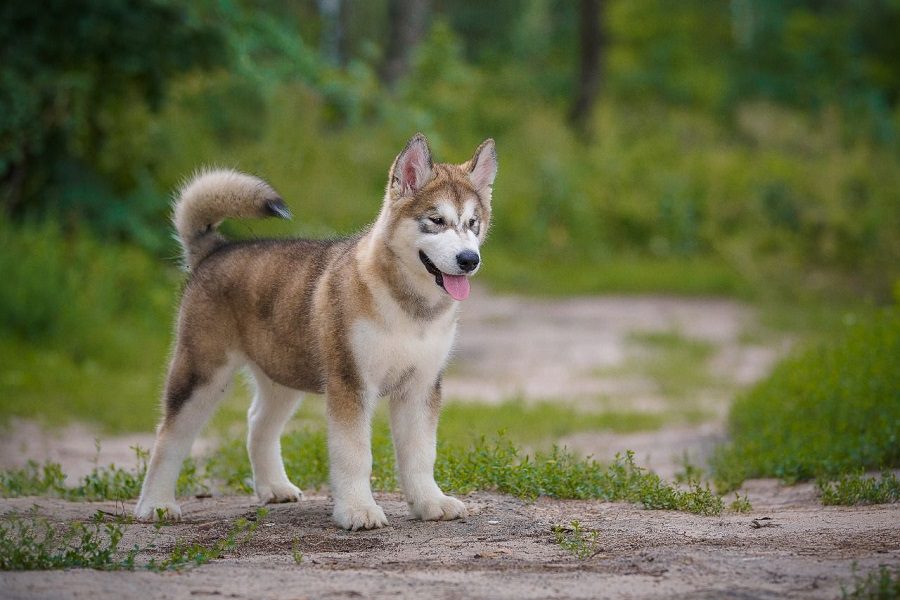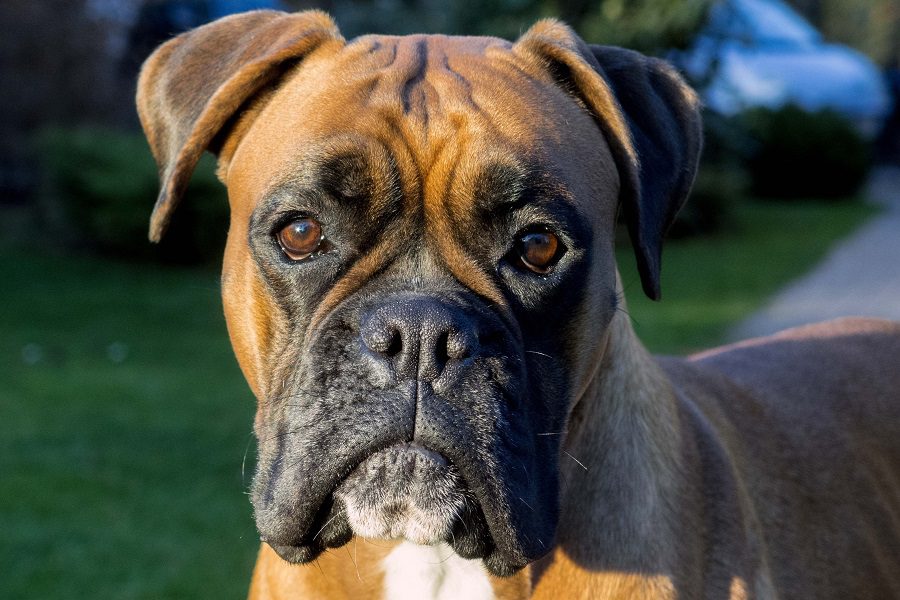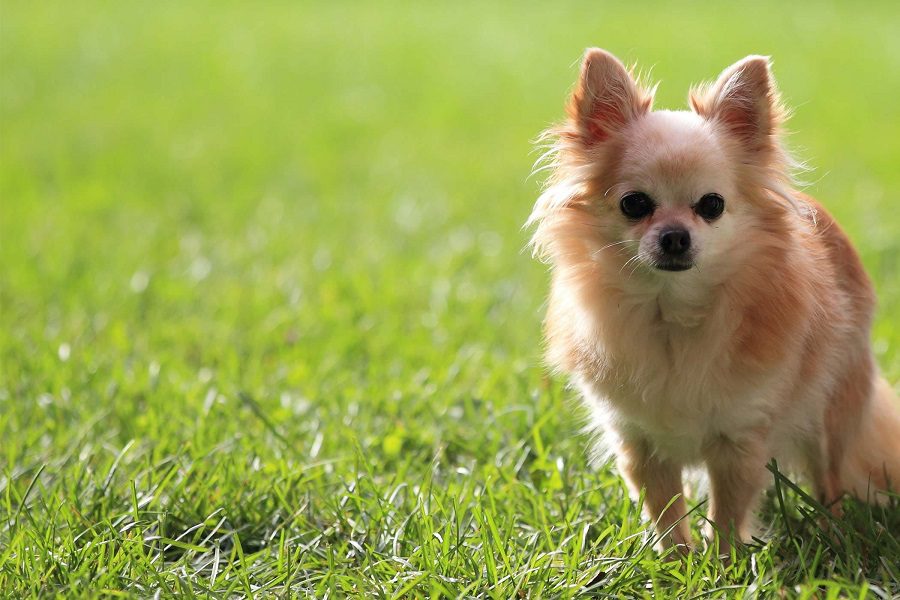Last Updated: 10 months ago
The history of the mastiff is one of great variance, with evidence of the mastiff dating back to ancient times, with one example being on display in the British Museum as part of the Babylonian Palace of Ashurbanipal display.
Following World War I and II, the dog breed was said to be all but finished in England.
The United States and Canada were said to have revived the breed, and as such, they are now, luckily, once again known as a well-established breed. The Great Dane, the Chow, the Pug, and the Saint Bernard are all said to carry a mastiff blood line.
The Mastiff Club of America (MCOA) began to protect and promote the mastiff in 1929. There goal is also to show the world that they still have a great selection of working dogs.
Working dogs are those that are utilized in search and rescue, therapeutic tracking, or even as canine ambassadors, to name a few areas.
Common Characteristics
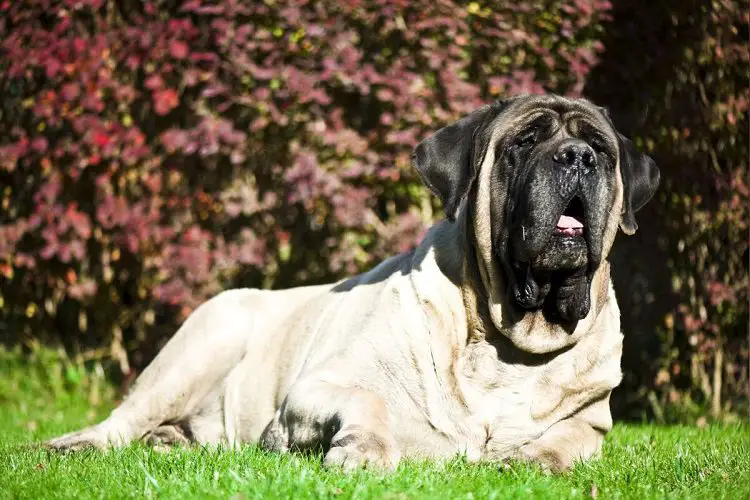
Mastiffs are commonly characterized as a massive breed due, in particular, to their size in general.
They have what is referred to as a rectangular proportion. They are a heavily boned dog, which gives them a very powerful muscle-based structure.
Color
Mastiff’s coloring is that of an apricot, brindle, or fawn. The brindle should also be covered completely with stripes that are very dark in color.
It is not uncommon for a mastiff to have a chest that has a white, small patch. They wear a black mask around their eyes and nose.
Head
Due to the mastiff’s overall massive size, their outline is a massive one as well. This is going to be the case no matter the angle at which they are viewed.
- Eyes: They have brown eyes that are set widely apart from one another but not in an overly prominent way. The darker the eyes, the better.
- Ears: The mastiff’s ears have a rounded tip and are shaped like a V. The ears are considered to look small in comparison to or proportion to the head and skull. The ears are, on average, darker; the blacker the better in the case of show dogs, with the color conforming to that of their muzzle.
- Muzzle: The mastiffs muzzle coloring is dark; the darker, closer to black, the better, especially in reference to the dogs that are to be show dogs. The muzzles size is short and runs equally to the end of the nose in overall size.
- Nose: The nose of the mastiff, like the ears, averages a dark color. The darker the shade, the better. The nostrils are flat and spread.
- Mouth: The mouth of the mastiff is also massive and shows the breed’s powerful jaw line. Canine teeth that are wide apart and healthy are ideal.
Body
The mastiff’s body is very massive, muscular, and powerful. They have legs that are set wide apart, strong, and straight.
- Neck: A healthy mastiff has a very muscular and powerful neck. It’s size will increase gradually in circumference as it goes back to meet up with the shoulders. The mastiff does not have a lot of loose or excess skin, which they refer to a being “dry”.
- The mastiff has a muscular hindquarter as well. It is wide and broad on the healthy mastiff.
- The rear legs of the mastiff are set wide apart. When one views the mastiff from the rear, the legs are parallel.
- Feet: The feet of the mastiff have black nails. The feet are round and large. The toes of the mastiff are arched.
- Tail: The tail is set high and tapered to the tip.
Coat
The mastiffs coat should be groomed to not allow a look of fringe.
This fringe will appear when the coat is allowed to grow to long and is most dominantly noticed on the tail, belly, and hind legs. Their coat is coarse, moderately short, and straight.
Health Issues
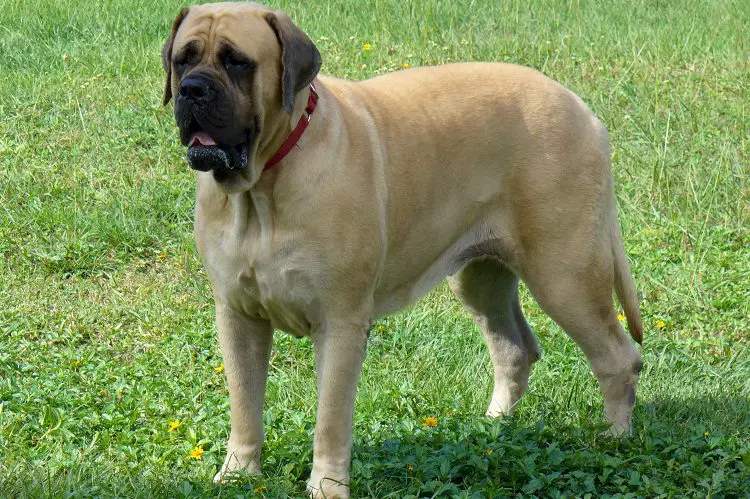
Overall the mastiffs are a healthy breed but like other large breeds tend to have a shorter lifespan, with theirs being around nine to ten years.
Some specific health concerns for this breed may be the following, however, it is not a definite that they will experience any of them.
- Elbow dysplasia
- Hip dysplasia
- Cystine urolithiasis
Size
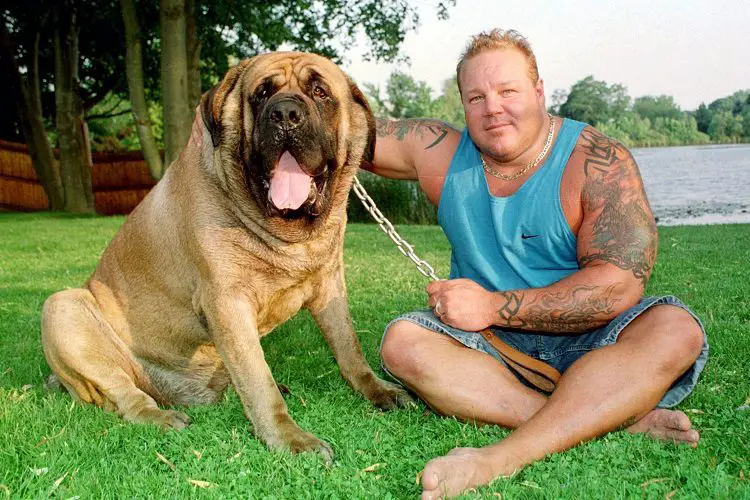
Pups during growth periods need to be encouraged to take it easy so as to prevent joint injuries. Taking careful control of their play and exercise until they reach around 18 months of age is the best way to go about preventing unnecessary harm.
Mastiffs grow at rates that are very astonishing and should be allowed to just naturally hit their growth levels.
This is done by not forcing artificial calcium and vitamins into their diets. Mastiffs are still growing at a good rate until they are closer to around three years of age, as their pups are longer than the average breed.
The typical mastiff will range from 27 1/2 inches up to about 30 inches, with a larger than average mastiff being closer to 36 inches in height. Females have average weights of 120–170. The males, however, tend to be larger, weighing 160–230 pounds on average.
And the largest of all mastiffs, who weighs in at 343 pounds,
Personality Traits
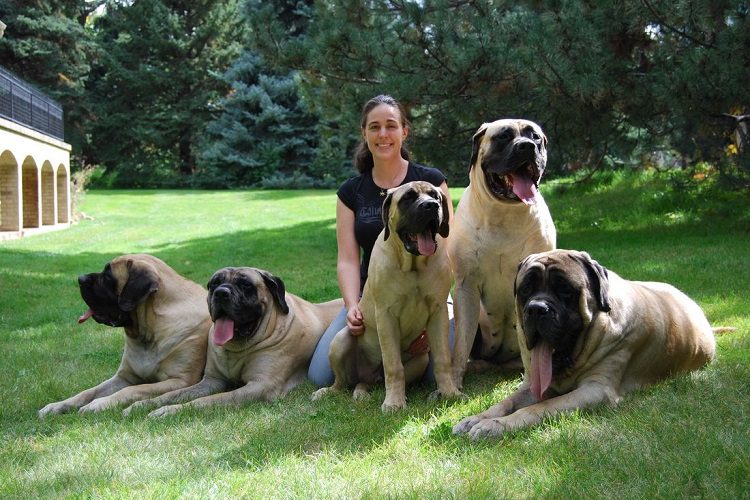
The mastiffs do well when with the family but are not recommended alone with the young child, the frail, or the unsteady as they can easily knock them down due to their size.
They are, however, excellent with children and families, as they are very patient, nurturing, protective, and attach themselves very deeply to the people that they love.
The best environment is that of a house with a yard. The mastiff is one that needs regular walks (either outside or on a dog treadmill), and they are always up for a romp about the yard; however, they do tend to have a lazy side.
The mastiff is often said to not realize their own size and will try to still snuggle on the couch, for example.
The use of an electrical fence is discouraged due to their high tolerance for pain; they will often not feel the shocks.
However, a fence is highly recommended as they are known to chase other dogs, cats, squirrels, and even unknown people. The mastiff should not be left outdoors but should instead live inside with their families.
Puppies have a tendency to chew on things and often swallow what they chew. This could easily include their toys, chew bones, rocks, and sticks.
Therefore, they must have toys carefully selected and be watched rather closely to be discouraged from doing these things in order to prevent intestinal blockage.
Temperament
The mastiff is a good-natured and docile dog breed that is very calm. It is not overly shy nor vicious but yet is very protective.
This protective instinct that they have makes the mastiffs need to be socialized great, not just with people but with other animals and dog breeds as well.
The mastiff is a breed that requires training and this training needs to be done by someone that is very strong or a leader type as a mastiff will walk all over a softie.
They mastiff needs to be handled in a manner that is very consistent and should include lots of positive reinforcement, love, praise, and hugs. The mastiffs training needs include the following aspects.
- Learning new people and visitors are okay and are to be welcomed.
- Children when playing rough are not in any type of imminent danger.
- That the family cats and other pets are also a part of the family.
- That following the rules, commands and listening to orders are required.
- You may also consider create training and getting a heavy duty dog crate.
Mastiffs are a loud animal, they do not bark a lot but when they do bark it is heard, they are also “guilty” of the following items.
- Drooling
- Grunting
- Wheezing
- Being gassy
Care Instructions
The part of the upper lip that hangs (the flew) should be cleaned following meals. Bathing is only required as needed.
The mastiff is an animal that is very easy to care for other areas of care include but are not limited to the following areas.
Teeth
Their teeth should be brushed weekly and are done for the following reasons.
- Prevent the buildup of tartar.
- Promotes healthy gums.
- Keep bad breath at bay.
Coat
They have a coat that does not require a lot of upkeep.
- They do well with a weekly brushing.
- They do shed year round.
- Heavier shedding to occur in the Fall and Spring.
Wrinkles
The mastiff does have wrinkles that require daily cleaning.
- Carefully to ensure the wrinkles have been dried.
- This is to prevent bacterial infections.
Exercise
The mastiff needs daily exercise.
- Care needs to be taken as they become overheated easily.
- When lacking in exercise and stimulation become prone to chew.
Water
Mastiffs need and drink a large amount of water (the amount is astounding in regards to the average pup of other breeds).
- They must have their dished rinsed out on a daily bases.
- Drooling is unpreventable will accumulate in the water dish.
- The mastiff pups will not drink their own drool thus requiring fresh water often.
Conclusion
The mastiff, in conclusion, is an ideal breed of dog for those that have the room for such a massive sized dog to frolic about.
They are a very loving animal that is sensitive and docile. Mastiffs dislike conflict and are often known to come between two spouses that are fighting or a parent when a child is being disciplined or punished that should never be treated roughly.
Resources:

